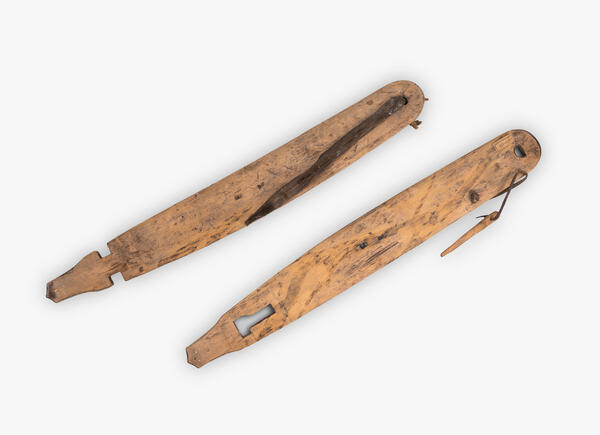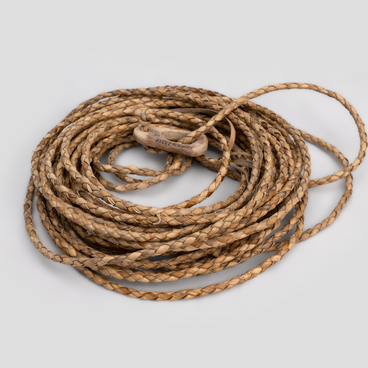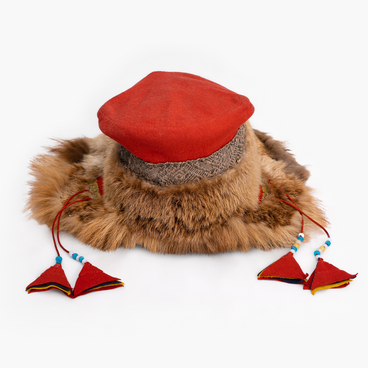Reindeer herds of the Sami people were small — from five to several dozen reindeer per family. In winter, the Sami kept reindeer near their dwellings. After calving, the reindeer were released for the summer to the coastal tundra for free grazing, and in the fall, they were herded again. Sami people traveled in a kerezha (a boat-like wagon) with one reindeer, and loads were transported on pack reindeer (tashke stags). The use of reindeer for pack transportation by the Sami is mentioned in sources dating back to the early 16th century.
The pack saddle of the Kola Sami of the 19th — early 20th century (tashke) is very simple in construction and is not similar to the pack saddles of other reindeer herding peoples. It consists of two arc-shaped planks put on the back of the reindeer so that the upper ones form the protrusions to which the packs are attached, and the lower ones are fastened under the reindeer’s belly with the strap. To prevent the planks from traumatizing the skin, cloth or reindeer skin was placed under them.
The Kola Sami people usually made pack bags of suede. The front and back walls of the bag were sewn from two rectangular pieces, and the third piece in the form of a strip served as side panels and bottom. A handle was attached at the top.
Pack reindeer, as well as harnessed reindeer, were placed one after another when moving, with the owner leading the first reindeer by the bridle.
The “Dictionary of the Vocabulary of Traditional
Trades and Economic Occupations of the Kola Sami” writes about the use of pack
reindeer as follows,



